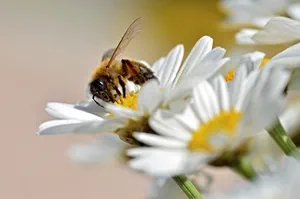
At first glance, bumble bees and carpenter bees might look alike, but they have some key differences that set them apart. Here’s what you need to know:
Appearance
Where They Live
The biggest difference between bumble bees and carpenter bees is their nesting habits:
Are They Dangerous?
Protecting Your Home and Coexisting with Bees
Bumble bees are rarely a nuisance unless you accidentally disturb their nest, but carpenter bees can cause damage to wooden structures near your home. Preventive measures, like sealing exposed wood or using treated materials, can help keep them at bay.
Both bumble bees and carpenter bees play an important role in pollination, so understanding their behaviors can help you coexist peacefully with these beneficial insects while protecting your property from potential damage.